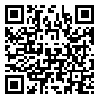Volume 13, Issue 2 (Vol.13, No.2, Summer 2017)
irje 2017, 13(2): 136-144 |
Back to browse issues page
Download citation:
BibTeX | RIS | EndNote | Medlars | ProCite | Reference Manager | RefWorks
Send citation to:



BibTeX | RIS | EndNote | Medlars | ProCite | Reference Manager | RefWorks
Send citation to:
Saatchi M, Panahi M, Ashraf Mozafari A, Sahebkar M, Azarpakan A, Baigi V et al . Health Literacy and Its Associated Factors: A Population-Based Study, Hormuz Island. irje 2017; 13 (2) :136-144
URL: http://irje.tums.ac.ir/article-1-5759-en.html
URL: http://irje.tums.ac.ir/article-1-5759-en.html
M Saatchi1 
 , MH Panahi1
, MH Panahi1 
 , A Ashraf Mozafari1
, A Ashraf Mozafari1 
 , M Sahebkar1
, M Sahebkar1 
 , A Azarpakan2
, A Azarpakan2 
 , V Baigi1
, V Baigi1 
 , K Holakouie Naieni *
, K Holakouie Naieni * 
 3
3

 , MH Panahi1
, MH Panahi1 
 , A Ashraf Mozafari1
, A Ashraf Mozafari1 
 , M Sahebkar1
, M Sahebkar1 
 , A Azarpakan2
, A Azarpakan2 
 , V Baigi1
, V Baigi1 
 , K Holakouie Naieni *
, K Holakouie Naieni * 
 3
3
1- PhD Student of Epidemiology, Department of Epidemiology and Biostatistics, School of Public Health, Tehran University of Medical Sciences, Tehran, Iran
2- PhD Candidate of Disaster Management, Social Determinants on Health Promotion Research Center, Disaster manager, Hormozgan University of Medical Sciences, Bandar Abbas, Iran
3- Professor of Epidemiology, Bandar Abbas Health Research Station, Department of Epidemiology and Biostatistics, School of Public Health, Tehran University of Medical Sciences, Tehran, Iran ,holakoik@hotmail.com
2- PhD Candidate of Disaster Management, Social Determinants on Health Promotion Research Center, Disaster manager, Hormozgan University of Medical Sciences, Bandar Abbas, Iran
3- Professor of Epidemiology, Bandar Abbas Health Research Station, Department of Epidemiology and Biostatistics, School of Public Health, Tehran University of Medical Sciences, Tehran, Iran ,
Abstract: (10032 Views)
Background and Objectives: The awareness of the health knowledge level of a population and the weaknesses in people's health literacy is essential for educational planning. This community assessment study, which was conducted to develop an appropriate infrastructure for educational planning, examined the level of health literacy in Hormuz Island’s residents.
Methods: This analytical cross-sectional study was done on a sample of people over 18 years in Hormuz Island. Data were collected by two questionnaires which included basic information such as age, sex, marital status, age at marriage, and also indirect questions regarding the economic status of the individuals. Also, the Short Test of Functional Health Literacy in Adult (S-TOFLHA) was used to measure the patient's ability to read and understand health-related concepts. The linear regression analysis was performed.
Results: The data provided by 486 individuals were analyzed in this study. The mean age was 39 years (18-79) and 48% were female. The mean household size was 4.5 people. The mean score of the subjects was 58.06. Thirty-five percent had less-than-sufficient health literacy, 18.21% had sufficient health literacy, 12.29% had insufficient, and 7.14% had higher health literacy. Education level (P<0.001), economic status (P<0.001), and age (P<0.001) were the main variables influencing health literacy in the sample.
Conclusion: Community assessment showed that older age groups did not have sufficient health literacy. Low economic status accompanied by low levels of literacy makes individuals less motivated to improve their health knowledge and, consequently, leads to low levels of health literacy in Hormuz.
Methods: This analytical cross-sectional study was done on a sample of people over 18 years in Hormuz Island. Data were collected by two questionnaires which included basic information such as age, sex, marital status, age at marriage, and also indirect questions regarding the economic status of the individuals. Also, the Short Test of Functional Health Literacy in Adult (S-TOFLHA) was used to measure the patient's ability to read and understand health-related concepts. The linear regression analysis was performed.
Results: The data provided by 486 individuals were analyzed in this study. The mean age was 39 years (18-79) and 48% were female. The mean household size was 4.5 people. The mean score of the subjects was 58.06. Thirty-five percent had less-than-sufficient health literacy, 18.21% had sufficient health literacy, 12.29% had insufficient, and 7.14% had higher health literacy. Education level (P<0.001), economic status (P<0.001), and age (P<0.001) were the main variables influencing health literacy in the sample.
Conclusion: Community assessment showed that older age groups did not have sufficient health literacy. Low economic status accompanied by low levels of literacy makes individuals less motivated to improve their health knowledge and, consequently, leads to low levels of health literacy in Hormuz.
Type of Study: Research |
Subject:
General
Received: 2017/08/30 | Accepted: 2017/08/30 | Published: 2017/08/30
Received: 2017/08/30 | Accepted: 2017/08/30 | Published: 2017/08/30
Send email to the article author
| Rights and permissions | |
 |
This work is licensed under a Creative Commons Attribution-NonCommercial 4.0 International License. |



